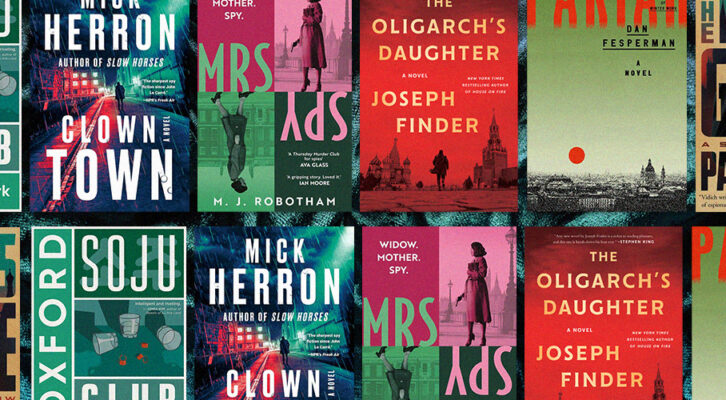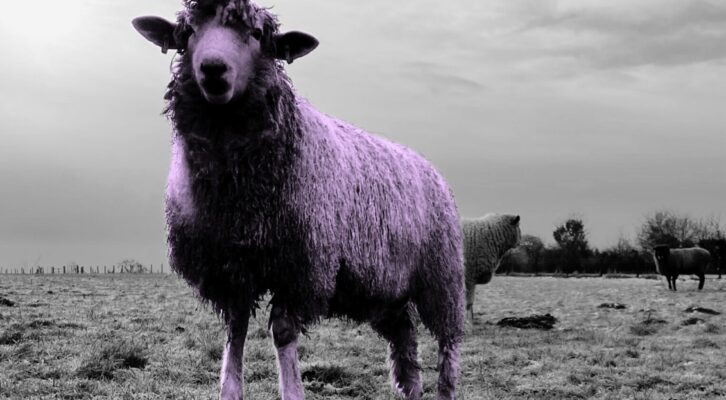
What’s With All the Sheep on Book Covers?
Celia Mattison on How the Lamb Became The Newest Literary It Girl
Think back to the last time you saw a sheep. Where were you—some grassy rolling hills? A dusty petting zoo? Or was it, maybe, in a bookstore? Maybe in the new releases, on the cover of Midnight Timetable, Bora Chung’s new collection of interlocked ghost stories, or Ruth by Kate Riley, a debut novel about a woman in a closed religious community. Amongst the backlist, you might have spotted The Boyhood of Cain by Michael Amherst, The Alternatives by Caoilinn Hughes, The Book of Ayn by Lexi Freiman, or Lapvona by Ottessa Moshfegh.
I clocked the new ovine ascendence because of a longtime friend and book industry colleague, Jordan Bascom. Once a week, she looks at the covers of dozens of forthcoming titles and we compare notes on what is in vogue, identifying covers with shared motifs, fonts, or images. Our shared affection for the animal kingdom means that we pay special attention to any cover vaguely zoological (outside of birds, which have remained ubiquitous cover fodder for decades). When she sent me the third sheep cover in a calendar year, I asked her what she thought these covers might be trying to say. “This is not your grandmother’s pastoral fiction.” Jordan replied wryly.
Even if you don’t judge a book by its cover, you’ve probably noticed that styles come in waves: Shannon Cartier Lucy paintings; the 2024 paint splotch; the pandemic blobs; the heyday of millennial pink. Elisabeth Egan recently explored the decades-long trend of the cover that pairs splashy neon text with an oil painting, best exemplified by Ottessa Moshfegh’s My Year of Rest and Relaxation. The runaway success of Moshfegh’s novel has made it one of the industry’s most ubiquitous “cover comps,” or a reference image used as inspiration for a forthcoming book.
But there’s more to the sheep book cover than the simple accessibility of thousands of royalty-free pastoral paintings. In 2023, the bunny became a shared literary avatar, definitive of a contemporary dark, witchy, and slightly feral mainstream womanhood. You might remember some of the landmark pop culture achievements in vulgar femininity for that year included the Paris Fashion Week bedbugs, the Tinder date Tabi heist, and the Bushwick perpetual stew.
“Did you want a lecture on sheep history?” Justine Lee asked me, before launching into a thirty-second explanation of thousands of years of ovine evolution. Justine is the author of The Wonder of Wool and an environmentally conscious knitwear designer based in London whose work celebrates the rich diversity of Britain’s sixty-two species of sheep. She’s even knitted with all of their wools. If you’re curious, the wool of the Border Leicester, a sheep easily distinguished by its cartoonishly bunny-like ears, is one of her favorites.
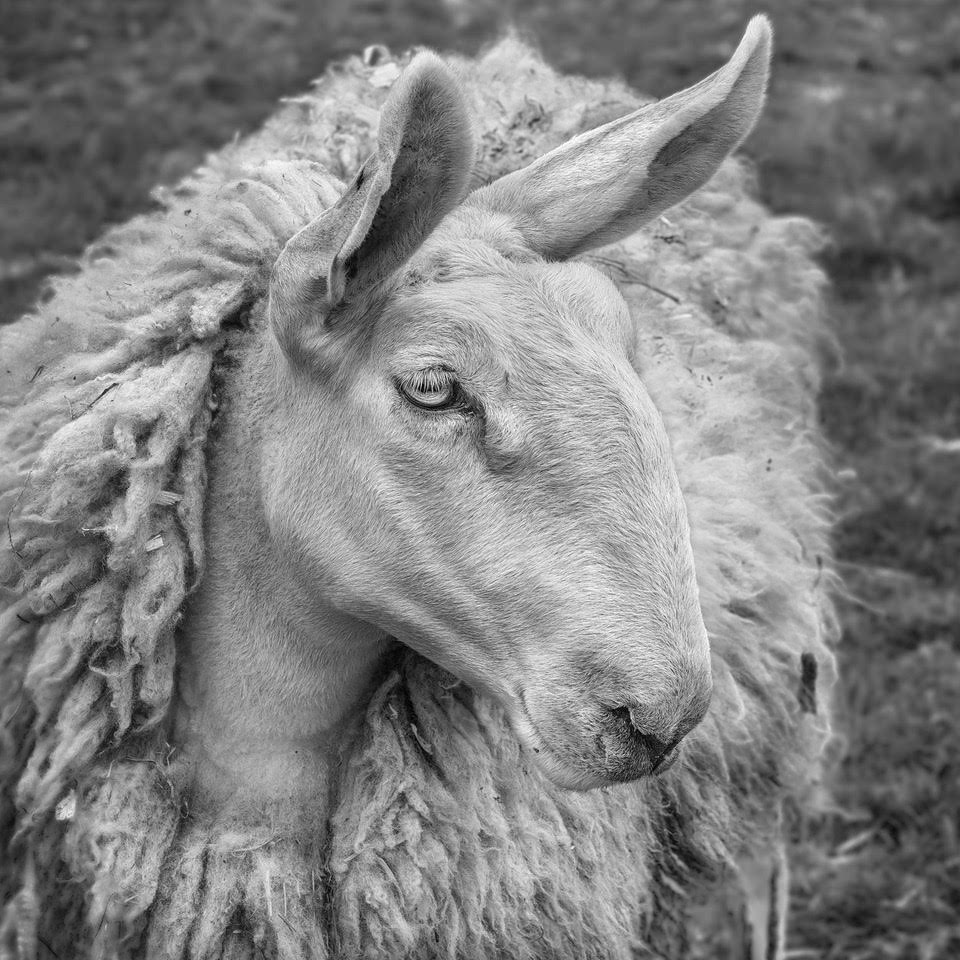 A handsome, woolly Border Leicester, Photo Credit: Tom Lee.
A handsome, woolly Border Leicester, Photo Credit: Tom Lee.
Sheep were domesticated in ancient Mesopotamia over ten thousand years ago and we have the ancient cave paintings to prove it. Sheep appear in folklore, religion, and mythology from all over the world: the Greek golden fleece, the Jewish shofar, the Egyptian Pharaoh’s shepherd’s crook, Christianity’s Agnus Dei. Though they’re related to goats and can often look quite similar, which the split-face cover of Jamie Quattro’s Two Step Devil cleverly riffs on, they are two distinct species with very different cultural baggage.
Sheep are physically sexually dimorphic—meaning that it’s easy to distinguish males and females of a species—as well as culturally sexually dimorphic. There’s a reason trucks and football teams are not named after lambs and ewes. We see sheep as docile, passive, and stupid. Lambs are symbols of innocence, gentleness, and literal softness, and thus of unwitting, if banal, sacrifice. Women who act younger than deemed socially appropriate get the “mutton dressed as lamb.” To be a lamb is to be desired, and that desire is not always safe.
It’s that tension, an alignment between innocence and violence, that might explain the contemporary allure of the lamb. Publishing is a youth-obsessed industry, and female infantilization is in. Miley Cyrus’s kiss-off ode to singledom, “Flowers” might have won her a Grammy in 2023, but a year later it would be Sabrina Carpenter’s cheeky anthem to her own coquettish allure, “Espresso,” that would take the same prize. Labubus, Gen Z’s answer to the Uglydoll or the Beanie Baby, are suddenly the most popular accessory of the year for all ages. Ballet flats, frilled socks, and bows are not just TikTok teenwear but workwear staples carried by even the least adventurous fashion retailers.
If the rabbit was a representation of a sweaty, manic womanhood honed by pandemic isolation, the sheep is symbolic of the resulting conservative backlash and a definitive end of the #MeToo era. As mainstream culture embraces girlish femininity alongside an ahistoric raw-milked nostalgia for a trad past, the sheep becomes a totem of the submissive, sacrificial role for women and girls in a new gender landscape.
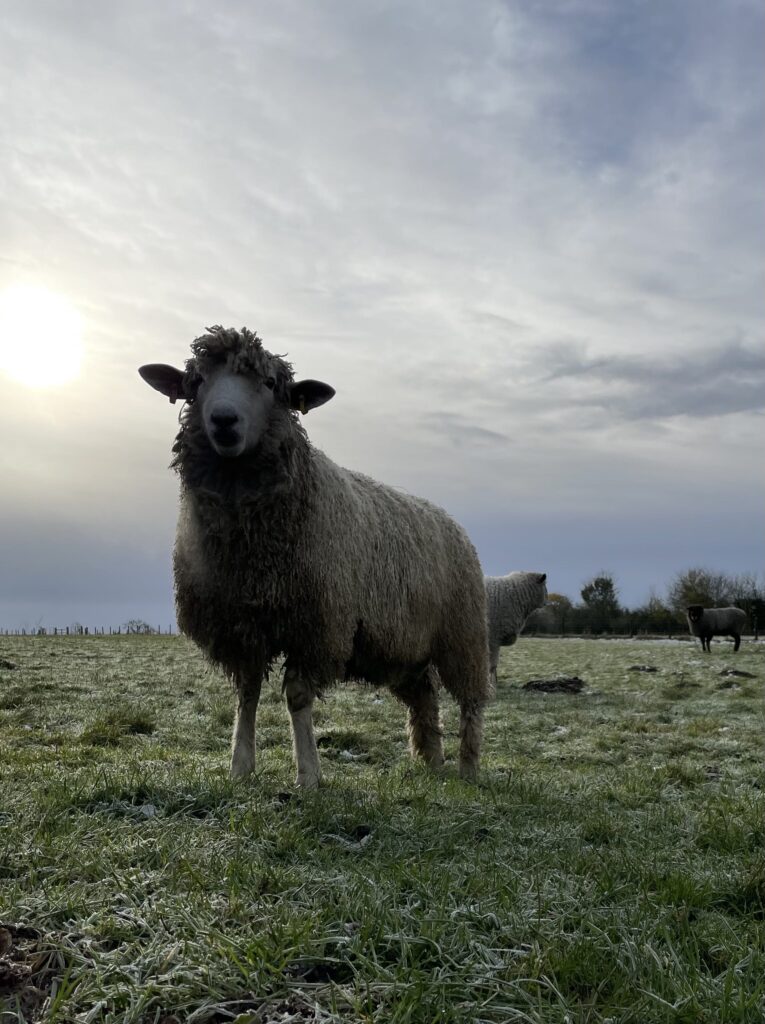 Leicester Longwool. Photo Credit: Justine Lee
Leicester Longwool. Photo Credit: Justine Lee
Ingrid Paulson, the designer behind an early sheep cover in André Alexis’s perfect novel, Pastoral, told me she wasn’t surprised by the sheep’s popularity. “Evangelical Christianity in the United States has so much influence,” Ingrid, who is based in Toronto told me, “We’re probably going to be seeing even more biblical covers.” Ingrid was not the only person to bring up the deep association of the sheep, and particularly the lamb, with Christianity. But Maddie Jones, Bora Chung’s editor at Algonquin Books, has an additional theory about why lamb imagery is so resonant. “The environmental apocalypse is hanging over all of our heads.” Maddie said. “Maybe this is just because I was a Catholic school kid, but the lamb feels deeply, subconsciously, existential.”
Most of our cultural associations with sheep are inaccurate. “Not all sheep naturally flock.” Justine told me. This includes her favorite breed, the Castlemilk, which she describes as being naturally mischievous. “Castlemilk haven’t been that domesticated, compared to something like the Herdwick, which are so friendly they’ll come up to you for cuddles. If a dog tries to herd Castlemilk sheep, they just scatter.” The stereotype that sheep are stupid is also false, as dozens of videos of sheep outsmarting gates and cattle guards will tell you.
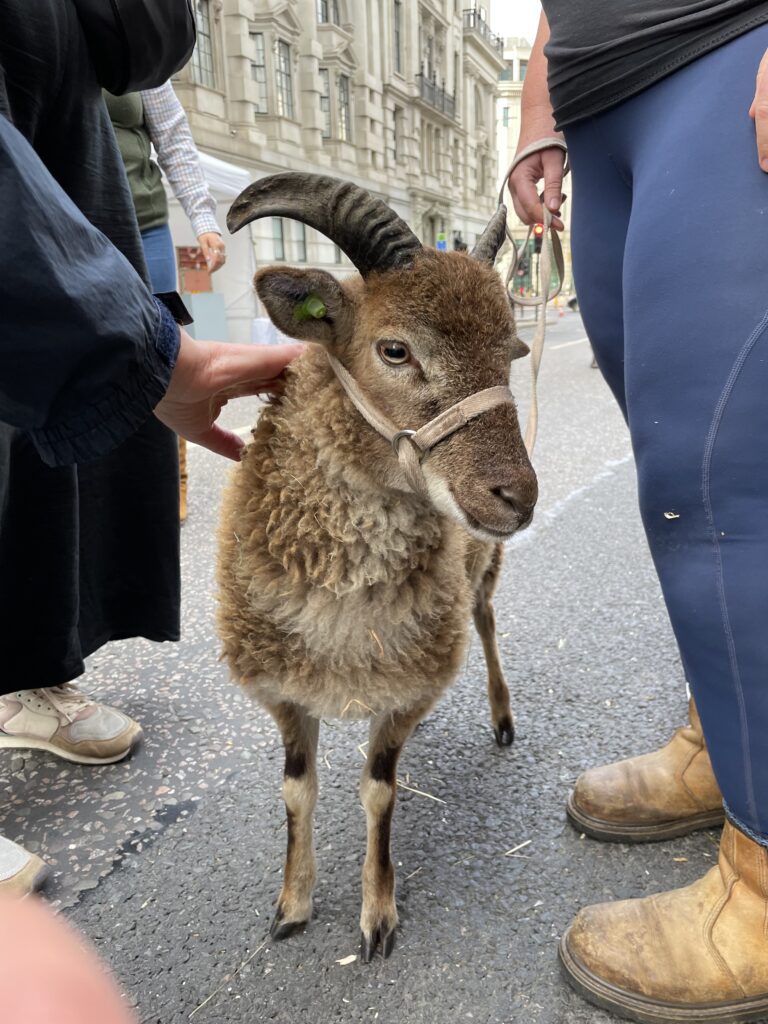 Rolo the Castlemilk Moorit sheep — Justine’s favorite breed. Photo credit: Justine Lee
Rolo the Castlemilk Moorit sheep — Justine’s favorite breed. Photo credit: Justine Lee
Sheep are not dumb, anonymous fuzzy meatbags; they’re an essential companion in the story of human evolution. “If someone invented wool today, they’d win every award possible.” Justine said. Wool is not just naturally breathable, durable, and biodegradable but also fire resistant and antibacterial. It can be used to make nearly any garment, even diapers, thanks to the fiber’s water repellant exterior and highly absorbent interior. In addition to keeping us warm and dry, sheep have also provided us with meat, milk, sheepskin, parchment, and even landscape management for thousands of years.
Sheep have been so historically important to our collective survival that it can be easy to now take them for granted—to toss around the word “sheeple” like a crank conspiracy theorist, to gripe about the price of a fast fashion wool sweater.
But book covers do not just reflect the reader; they reflect the producer. Publishing remains a highly female-dominated industry, with the bulk of the unglamorous gruntwork performed by underpaid women in their early and mid-twenties. There are probably at least a dozen young women responsible for bringing any one sheep book from a Word doc to a brick and mortar shelf; maybe it’s these women that feel drawn to imagery of sacrificial lambs, abandoned ewes, and lost flocks.
But just like the publishing industry couldn’t exist without women, mankind wouldn’t exist without the noble, oft-overlooked sheep. For some of us, the connection is a little more direct. Near the end of our conversation, Jordan casually dropped a key bit of lore: “I was named after a sheep farmer, now that you mention it.” She said, “I should have mentioned Janie Jordan. She was indirectly responsible for my parents meeting.”
Sheepskin is still used to make parchment, just as it was millennia ago, and the sheepy cover is a full circle reminder of the primordial role sheep played in early writing, literacy, and bookbinding. “There’s diminishing returns around recreating certain styles.” Ingrid commented on the oversaturation of certain trends like the Moshfeghian oil painting paired with neon text. But our relationship with sheep is too complex to think of these covers as relevant only to a particular political or temporal aesthetic. The sheep is a reminder of our shared past, our convergent survival, and of all the forgotten creatures of our written and unwritten history.
Celia Mattison
Celia Mattison is the author of Deeper Into Movies. She lives in Brooklyn and writes about film, fiction, and scuba diving.











